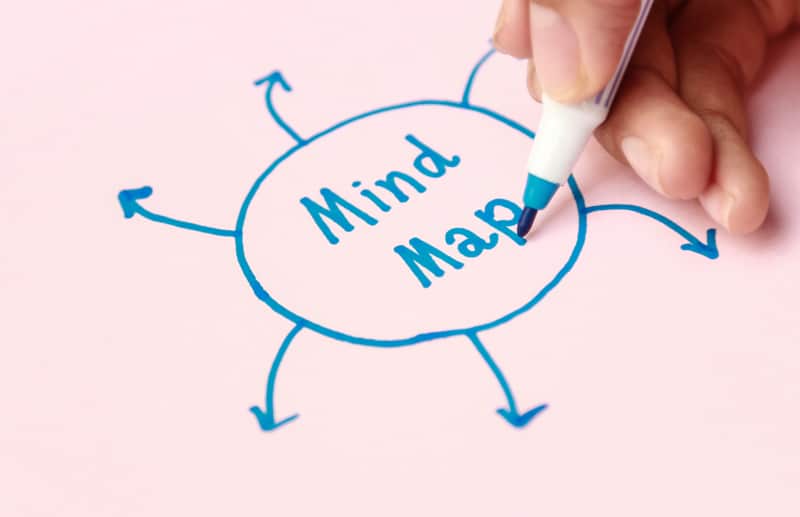Mind maps: an unknown secret weapon when studying

Midterms or final exams are coming up and you have to start planning and ‘digging in’. Now, where to start? Starting to study is not always as easy as opening the syllabus and learning the content by heart; the human brain retains what it understands with great ease, and for this reason, before starting to memorize a text like an automaton, it may be more convenient to understand it. And this is where students will find a powerful weapon in mind maps.
Although the name may be scary at first because it is somewhat complex, it is simply a graphic representation of an idea we have in our brain. A mind map can consist of something as simple as scribbling some project on a paper napkin in a bar, and although this may seem innocent to us, it holds great potential, or as Tony Buzan explained, a mind map is “a universal key that allows us to unfold the full potential of the brain. The mention of Buzan is not free of charge, as he is credited with neither more nor less than the authorship of mind maps.
The mind map has a triple function: it triggers creativity, unblocks the start when studying and increases the retention of what is represented. How does this triple virtue take place for a student?
If the student is confronted with a work or project, he or she should document it well, but above all he or she should give an orientation to it. A mind map is nothing more than a succession of loose ideas to which we later give a meaning and as in the creative phase these ideas are born ‘loose’, it is more likely that we will not discard any of them. Here, the chances of being creative soar.
Let’s imagine that the student is preparing for a specific exam. Where to start? The simplest option may be the temporary one: start the subject from the beginning to the end; however, this order forces us to learn the hierarchy as well (content of chapter 1, 2… etc.). The mind map allows us to start from a basic idea, for example, the Reconquest (if that is what we are studying), and around it to write down a series of facts that we consider important. Without realizing it, we have unlocked the beginning and we are already studying.
Perhaps this is the most interesting facet for the student of mind mapping. The graphic representation of an idea makes it easier to memorize it, and that is because the saying “a picture is worth a thousand words” reaches its maximum expression in mind maps.
Surprisingly, making a mind map is much easier than we think, and in a few seconds we can create our own by following these simple steps:
Write a central idea on a blank piece of paper (better if we put it in landscape)
The idea can be anything from a topic we have to study, to the next vacation. Putting this idea in the center has a justification: it allows our brain to add concepts to the sides. It is much more effective if the idea is accompanied by a drawing (an umbrella, for example, if the project is on vacation), much easier to remember than a text.
This is the critical phase of mind mapping, because with this brainstorming we give free rein to our creativity. If it is a matter of study, we will write down the relevant facts of the matter in a disorderly way and in the order we consider.
A phase in which we will finally put everything represented in order. Here we will establish a final hierarchy that will allow us to memorize everything in a simpler way; the use of paper here is already a bit cumbersome, but fortunately, there are many apps and platforms that allow us to make, unmake, create and delete concepts until we find a definitive map.
